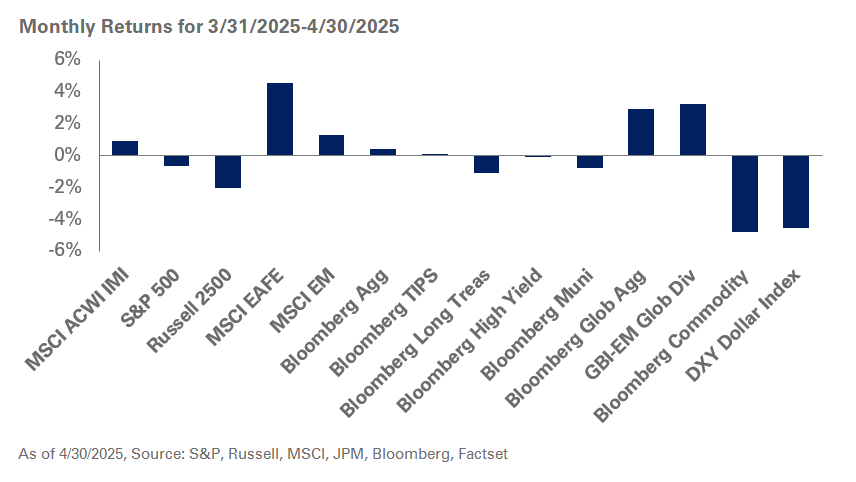Nick Saban, head coach of the Alabama Crimson Tide, is one of the most successful college football coaches of all time. He has led his teams to victory 80% of the time during his 26-year tenure. When asked about his secret to success, he said “Process guarantees success. A good process produces good results.”
In investing too, a sound governance structure, consisting of experienced investors and an effective decision-making process, is vital for success. Given the current investment challenges and the likelihood of diminished market returns in the future, robust governance is as important as ever.
At NEPC, we believe focusing on the following five components will greatly impact your ability to achieve your investment objectives:
1. The Team
Great coaches and investment leaders recognize the role of teamwork in achieving success. American basketball coach John Wooden said, “If you want to go fast, go alone. If you want to go far, you need a team.“
An investment team with diverse backgrounds and investment expertise, emphasizing a culture of collaborative engagement, is key to successful investing. Organizations make better decisions when multiple perspectives are considered, and team members complement and play to each other’s strengths.
In addition to having the right team members, institutions also need the right team size. As in football, investors can be penalized for having too many players on the field. Smaller committees tend to be more productive and efficient; large committees can be unwieldy and prone to group-think as members defer to others or fail to see the importance of their role.
2. A Playbook
In football, plays aren’t made up on the spot; they are drawn from the team’s playbook. The playbook is often regarded as the central nervous system of the team. Similarly, the investment policy statement should contain clearly defined investment objectives, include asset allocation parameters, summarize general investment practices, and outline the responsibilities of the main decision-makers. An investment policy statement should also encompass procedural information, including rebalancing protocols, meeting frequencies, and due diligence requirements.
A clear process and structure are essential for a sound investment policy statement. However, be mindful of overly prescriptive guidelines. The best policies provide guidance but allow freedom for decision-makers to identify the most prudent course of action.
3. The Strategic Game Plan
Investors should be willing to devote significant time to their investment plan just as coaches spend countless hours developing their approach to a particular game. An effective asset allocation strategy requires rigor and process.
Evaluating an asset class to determine where it falls on the fair value spectrum takes effort and expertise; the same is true in evaluating one asset class against others to assess relative value. Together, both evaluations are necessary to arrive at an optimal asset allocation. Be sure not to cut any corners in the process.
4. Dynamic Play Calling
In football, play-calling decisions are made before the game, during time outs, in huddles, and even at the line of scrimmage. A good investment governance structure also allows for “mid-game” adjustments when market conditions change. In some cases, these pivots are driven by the full body of decision-makers and, in other cases, by a subset of that team.
Alternatively, capable investment managers can be given broader investment authority to allow them to move quickly and take advantage of opportunities as they arise. Going forward, investors will be rewarded for being more dynamic and having a plan that enables them to capitalize on market dislocations in real time.
5. The 12th Man
While only 11 players are allowed on the football field at one time, many teams acknowledge the importance of the 12th man, that is, the team’s fan base. For investment programs, the 12th man consists of the program’s ultimate beneficiaries.
For a defined benefit plan, it’s the retirees relying on the pension for financial security. For a hospital, it’s the patients who benefit from better facilities or care paid for by the operating reserves. Keeping the 12th man at top of mind is a key component of any institution’s governance structure.
To reach your investment goals going forward, you not only need to critically analyze your investment decisions, but also scrutinize the process you employ to arrive at those decisions. Creating a high-performing governance structure, including a talented and diverse team and a productive process, takes time and focus. In many cases, it may take years, but it will be worth the effort.
In football, talented players may cover up ineffectual coaching, and in investment management, strong markets can mask poor governance. Given the prospect for low market returns in the future, we believe good governance is more important than ever.
Gone are the days when institutions could rely on a relatively static and conventional asset allocation to achieve their investment objectives. Going forward, a sound governance structure will be instrumental in enabling investors to “move the ball down the field” and ultimately win the game. To learn more about what it takes to build a strong governance structure, please reach out to your NEPC consultant.



